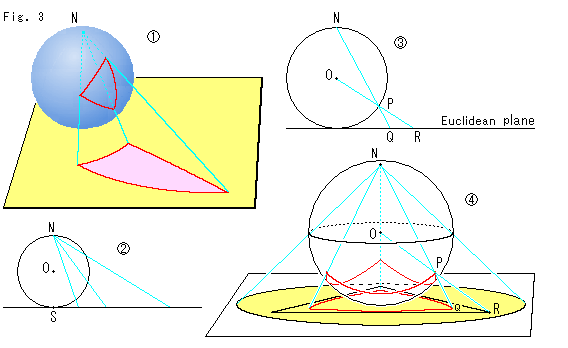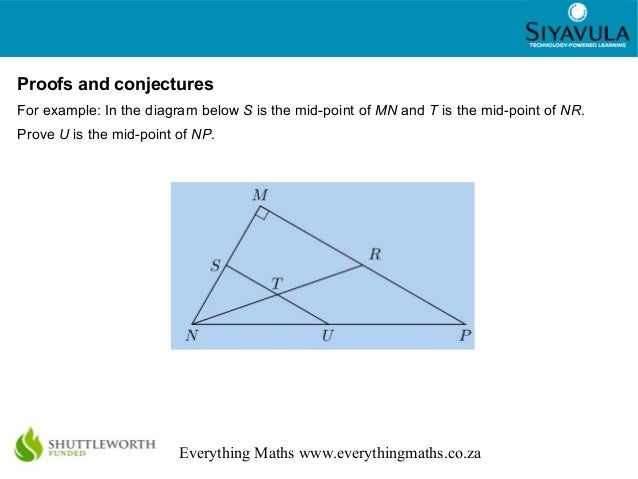


This is the case for the surface of a sphere the straight lines become great circles, whose planes pass through the center of the sphere, and since all great circles intersect each other at two diametrically opposed points (in the manner of the terrestrial meridians, which meet at the poles), no “straight line” can be parallel to another. In one of these geometries, called spherical geometry, no parallel line satisfying the conditions can be traced. In the nineteenth century, there occurred one of the great sudden revolutions in the history of mathematics (and also in human thought, as will be seen by what follows): two new geometries which do not satisfy the fifth postulate, but which are perfectly coherent, were discovered. Since the “parallel postulate” was more complicated than the others, the mathematicians following Euclid would try, for many centuries, to prove it from the four preceding ones, all in vain. A picturesque English edition of Euclid’s Elements by Oliver Byrne, 1847. This can be better understood given the more popular version of the fifth postulate due to the Scottish mathematician John Playfair (1748-1819), who demonstrated that it was equivalent to the one given by Euclid : “ Given a straight line and a point not belonging to this line, there exists a unique straight line passing through the point which is parallel to the first“. “If a line segment intersects two straight lines forming two interior angles on the same side that sum to less than two right angles, then the two lines, if extended indefinitely, meet on that side on which the angles sum to less than two right angles.”Īlthough the statement does not refer explicitly to parallel lines, the the fifth postulate is currently called “Parallel postulate”. The fifth postulate is however less obvious: As the sum of the interior angles α and β is less than 180°, according to the fifth postulate the two straight lines extended indefinitely, meet on that side. One of the reasons for this faith is that these postulates seem obvious: the first of them stipulates that a straight line passes between two points, the second that any line segment can be indefinitely prolonged in both directions, the third that, given a point and an interval, it is always possible to trace out a circle having the point for its center and the interval as its radius, the fourth that all right angles are equal to each other. These postulates would become the keystone for all of geometry, a system of absolute truths whose validity seemed irrefutable.

In book I of the Elements, Euclid poses the five “requests” that, according to him, define planar geometry. In order to traverse curved Space, non-Euclidean Space.įrancis Ponge The oldest known fragment of Euclid’s Elements as part of the Oxyrhynchus papyri, dated from the Ptolemaic period and belonging to the famous Alexandrian Library That will allow us to put our trust in the Word, Thus we may perhaps, one day, create new Figures Saving Earth Britannica Presents Earth’s To-Do List for the 21st Century.This post is an adaptation of a chapter of my book “ The Wraparound Universe” with many more illustrations.100 Women Britannica celebrates the centennial of the Nineteenth Amendment, highlighting suffragists and history-making politicians.
#Non euclidean geometry how to
COVID-19 Portal While this global health crisis continues to evolve, it can be useful to look to past pandemics to better understand how to respond today.Student Portal Britannica is the ultimate student resource for key school subjects like history, government, literature, and more.This Time in History In these videos, find out what happened this month (or any month!) in history.#WTFact Videos In #WTFact Britannica shares some of the most bizarre facts we can find.Demystified Videos In Demystified, Britannica has all the answers to your burning questions.Britannica Classics Check out these retro videos from Encyclopedia Britannica’s archives.Britannica Explains In these videos, Britannica explains a variety of topics and answers frequently asked questions.


 0 kommentar(er)
0 kommentar(er)
